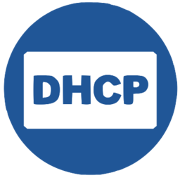Page 63
4 Things to Consider Before Choosing a Monitoring Service
Posted on July 28th, 2010 by Victoria Pal in Tech When you start searching for a reliable monitoring solution, be it to see if you have chosen a good hosting provider or in an attempt to optimize your site, there are some things you need to consider to help you make the most of the monitoring service. Here are a few guidelines will make this selection process easy.
When you start searching for a reliable monitoring solution, be it to see if you have chosen a good hosting provider or in an attempt to optimize your site, there are some things you need to consider to help you make the most of the monitoring service. Here are a few guidelines will make this selection process easy.
Identify Your Goals
Choosing a monitoring service is much easier when you know your goals. Most services on the monitoring market offer different monitoring levels, so to select the best one for you, first identify your objective. For example, if you need to be constantly in the loop about the status of your server, a simple server monitoring level at a low interval (say every 10 minutes) will do the trick. However, if you are interested in seeing how your whole website performs, you’d better look into a more sophisticated option, which will verify that all of your website’s components are downloaded properly from an end-user perspective.
How to Improve Website Response Time
Posted on July 22nd, 2010 by Victoria Pal in Monitoring, TechIn this blog we’ve already discussed the importance of response time. And I hardly need to tell you that when a website loads slowly, you’d rather take your business, reservation, purchase or pleasure somewhere else. So, now that you have your website up and running, you definitely don’t want it to be an underachiever and drive those potential clients away simply because it fails to load properly. So here are 5 simple ways to improve your website response time without too much effort.
Ping from Your Phone
Posted on July 7th, 2010 by Victoria Pal in Tech Ping is so simple and so useful. In previous posts, we mentioned ping a couple of times and the good work it does. The fact that ping has not changed much over the last 20+ years means it is on the right track. Now, what if you had that precious little tool with you all the time? You can check the availability of any network hardware on the Internet in a matter of seconds.
Ping is so simple and so useful. In previous posts, we mentioned ping a couple of times and the good work it does. The fact that ping has not changed much over the last 20+ years means it is on the right track. Now, what if you had that precious little tool with you all the time? You can check the availability of any network hardware on the Internet in a matter of seconds.
Ping is now widely available for mobile phones, whether you are a devoted iPhone user, Nokia lover, or Android hugger. There is a ping check available for all popular mobile phone platforms.
Time to Live (TTL)
Posted on June 24th, 2010 by Victoria Pal in Monitoring, Tech We might have mentioned TTL in some of the previous posts related to Ping and Traceroute. TTL or Time To Live is the transmission limit of a given data unit in a TCP/IP or UDP-based computer network.
We might have mentioned TTL in some of the previous posts related to Ping and Traceroute. TTL or Time To Live is the transmission limit of a given data unit in a TCP/IP or UDP-based computer network.
A data packet with a TTL value of 64 will cease to exist if it hasn't reached its end target in 64 iterations. The purpose of the TTL field is to avoid a situation in which an undeliverable datagram keeps circulating on an Internet system, a system that will eventually become swamped by such immortal datagrams.
DHCP (Dynamic Host Configuration Protocol)
Posted on June 24th, 2010 by Victoria Pal in Tech DHCP stands for Dynamic Host Configuration Protocol. This protocol is used by DHCP clients to automatically obtain IP addresses. Most ISPs use it to make your life easy and be ready to browse the Internet right after you properly connect your network device.
DHCP stands for Dynamic Host Configuration Protocol. This protocol is used by DHCP clients to automatically obtain IP addresses. Most ISPs use it to make your life easy and be ready to browse the Internet right after you properly connect your network device.
Four steps, invisible to the user, take place before a host can obtain its IP address.


 Copyright 2000-2026, WebSitePulse. All rights reserved.
Copyright 2000-2026, WebSitePulse. All rights reserved.